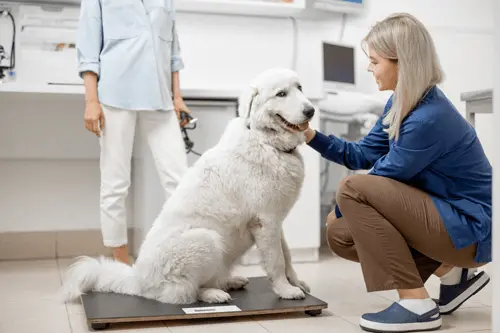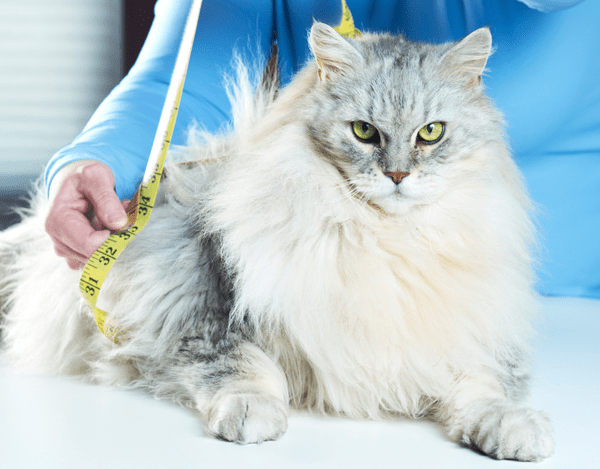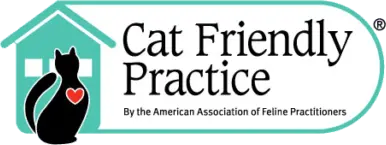Pet obesity is an epidemic in North America. More than 60% of cats and 58% of dogs are classified as overweight or obese—roughly 56 million cats and 50 million dogs. Unfortunately, pet obesity is more than an aesthetic concern, because excessive body weight can cause or contribute to serious health issues (e.g., arthritis, cancer, kidney disease, chronic pain) and shorten your pet’s life.
At UrgentVet, we routinely witness conditions resulting from pet obesity such as arthritis, injury, and unregulated diabetes.
Obese pets can also experience prolonged recovery times from illness and injury, delayed healing, heightened stress and anxiety during an emergency, and weight-related complications, such as respiratory distress, reduced cardiovascular health, and impaired or painful mobility.
Learning how to assess your pet’s body condition is a crucial first step toward preventing pet obesity, and can allow you to take action before permanent complications arise. Here are five tips for checking your pet’s weight.
#1: Hands-on pet assessment
You should be able to easily feel your pet’s ribs and spine without much pressure. If you must press with your fingers to locate these bony landmarks, or cannot feel them at all, your pet is overweight. In a healthy weight pet, a layer of fat and connective tissue insulates and protects these areas, but in a pet who consumes excessive calories or burns insufficient calories (i.e., does not exercise enough), the body lays down extra fat stores along these areas.
#2: Get a new view—check out your pet’s profile
With short-coated or hairless breeds, you should be able to see a defined waist when you view your pet from above, and a slight tuck-up after the ribs when viewed from the side. This check is best performed while your pet is standing, to prevent extra skin from altering their outline.
Cats normally have an obvious pouch or skin fold that hangs below the abdomen, and this does not always indicate weight gain—in fact, this extra skin can be found on thin cats. This primordial pouch serves as extra protection for their internal organs in a fight or attack, and may assist the cat when running fully extended.
If your pet has no indentation or tuck-up behind their ribs, or seems to have no “curves,” they are carrying unnecessary body weight.
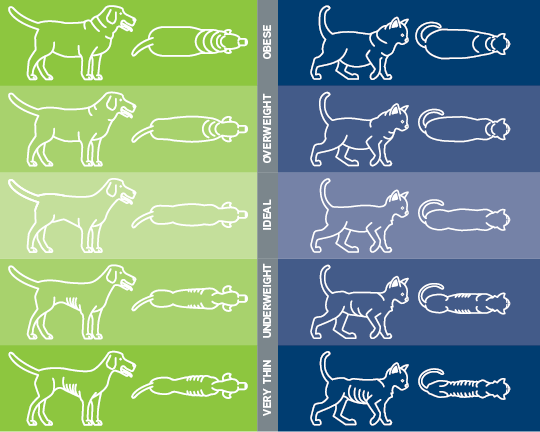
Image Source: American Veterinary Medical Association
#3: Determine your pet’s body condition score
Your pet’s weight is less about the number on the scale and more about their body condition. Similar to a human body mass index (BMI), body condition evaluates your pet’s fat covering in relation to their individual structure. As no two pets are alike—including those of the same breed—body condition provides a subjective, but relatively accurate, estimate of your pet’s physical composition.
Once you’ve felt your pet’s body and assessed their profile, take a look at the body condition scoring chart and see where they rank. Anything above or below a five (i.e., ideal weight) is worth a veterinary examination.
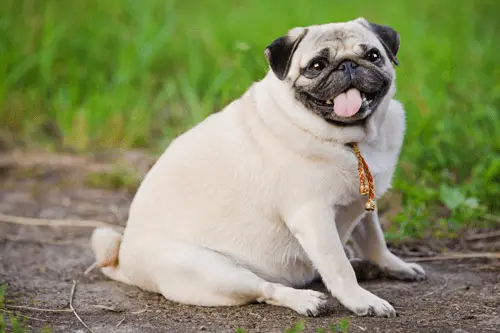
#4: Get a feel (literally) for your pet’s weight
If you’re a tactile learner, this tip may be helpful. Use your hand to appreciate how a healthy weight, underweight, and overweight pet feels.
Open your hand, palm down, and run the fingers of your opposite hand over the knuckles. This is how a healthy pet’s ribs should feel.
Close your fingers into a fist and feel your knuckles again—this is an underweight pet.
Open your hand again, palm up, and feel the cushioned area below your palm—this is an overweight or obese pet.
#5: Visit your regular veterinarian
If your pet’s results suggest they are not a healthy weight, don’t be discouraged—schedule an appointment with your regular veterinarian. Weight changes can be caused by medical issues, including chronic pain, endocrine dysfunction, and fluid accumulation, so ruling out disease before attempting an at-home diet for your pet is essential. If your pet is healthy, your veterinarian can provide nutritional counseling and design a safe, controlled weight loss program that ensures success without leaving your pet hungry or nutrient-deprived.
Routine pet weight assessment is the first step in recognizing pet obesity and preventing a cascade of weight-related health problems. But for the unpreventable, unexpected, and after-hours event, we’re here—contact an UrgentVet near you for your dog or cat’s non-life threatening urgent care needs, because your pet can’t wait to feel better.
